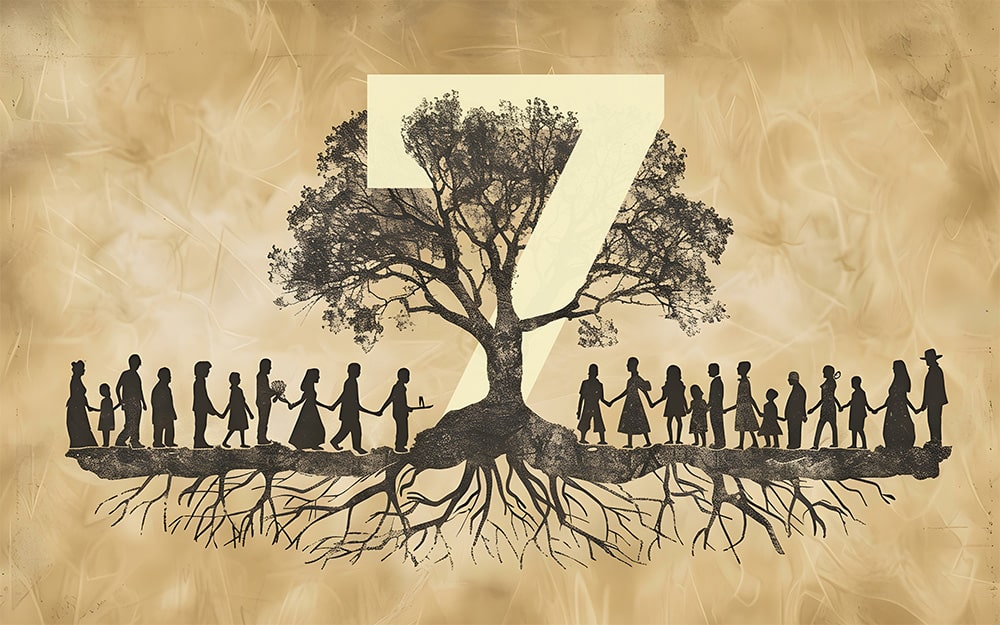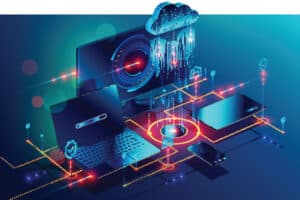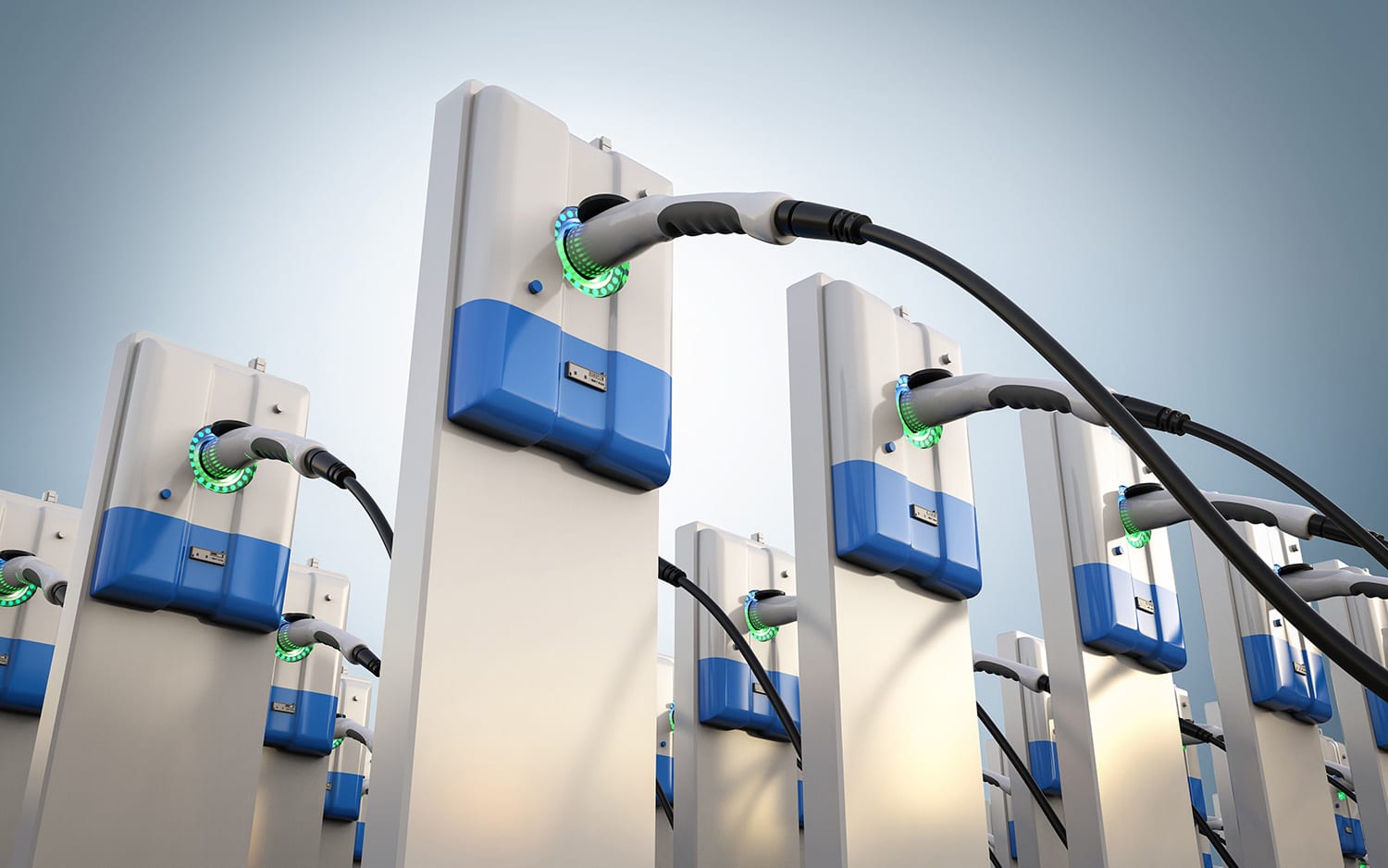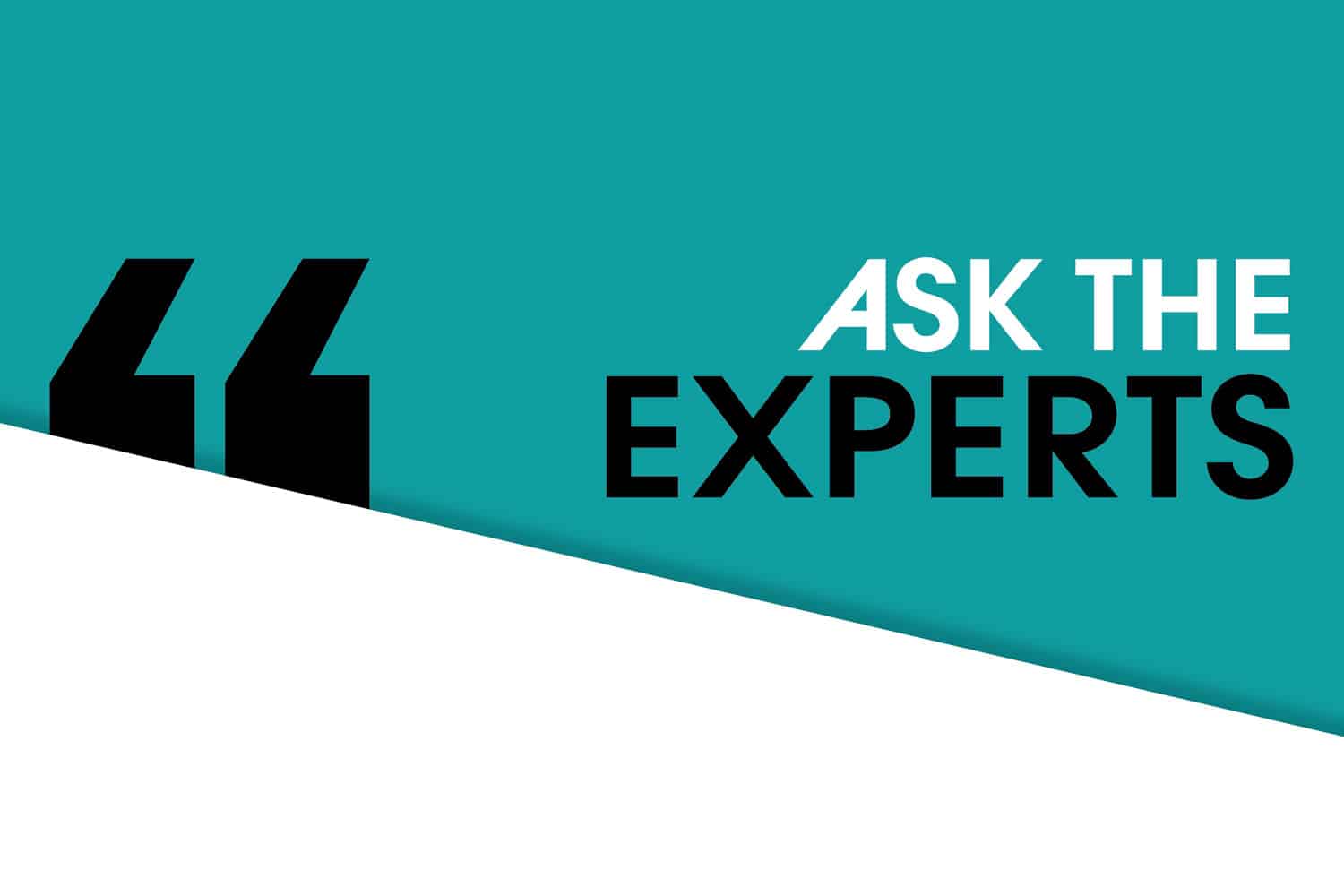
Seven-Generation Decision-Making
A major factor of sustainability is thinking about how we
Share:
Share:
Digital transformation is changing the parking and mobility industry. Operators are adopting digital systems and preparing for the future of the parking, transportation, and mobility industry.
For agency/operators or technology provider professionals, now is the right time to take a hard look at their skills and acquire new ones. There are some exciting opportunities. However, flexibility and strong tech skills are important for maximizing them.
COVID-19 led to some changes in the parking industry. However, there are other important factors behind this transformation:
For many operators, tech tools are a key strategy to adapt to these new trends. For team members, these new tools often call for developing new skills.
Are you comfortable with apps and software? Employees who can quickly learn how to use a new tool have an advantage. Operators get the most out of their tech investments with digital fluent teams and will continue recognizing this skill.
By 2025, 60% of businesses will use automation for most of their tasks. The role of the employee will change. Automated systems will handle most of the work. Workers will focus on tasks that require human input, like giving instructions to the automated system. Those with strong tech skills will create more value for their employer.
Communication is key. The industry is going through some changes, and it’s more important than ever to communicate clearly. Communication can help employees work towards a common goal. It also helps connect with users.
Communication is also crucial for building partnerships. Partnerships with other businesses can help offer new services and add-ons that create value for users. Public-private partnerships will be important for developing an EV charging infrastructure.
What is the next tech trend for the parking industry? Operators are currently going through changes, but EV adoption and other trends will continue driving transformation in the future. Operators need to always look for the next trend.
Curiosity is an important skill. Team members who keep up with the latest trends, study use cases, and imagine the next solutions can help with innovation.
How do you feel about change? Can you learn to use new software fast? Those who can adapt quickly have an advantage. Employees will see their role change as the industry continues to evolve. In five years from now, your tasks and responsibilities could be very different.
Some operators are also adding new sources of revenue; examples include shuttle services or parking for special events. Employees who can learn new tasks fast can support these efforts.
Behind every successful transformation, there are leaders who decide to change. As more operators turn to tech solutions, workers with leadership skills will get opportunities to shine.
You can make a difference by sharing new ideas and helping others adapt. At the industry level, operators can become leaders for change by embracing ideas like electrification or inclusivity.

As more systems become digital, analog or manual tasks are disappearing while automation and remote systems are becoming the norm. For instance, contactless payments can take over the role of the parking attendant. These changes are only the beginning; experts predict the smart parking market will grow at a rate of 22% between 2022 and 2030.
For parking and mobility industry professionals, replacing analog processes with digital alternatives creates new challenges.
The learning curve for some tech tools can be steep at first. Employees need to familiarize themselves with a new interface and navigate new features. For teams adopting automated tools, there is usually an adjustment period. Employees need to rethink the way they work. Automation helps save time, which means teams can focus on other areas to create value. Finding a way to apply best practices and standards to the digital environment can also take time. Plus, operators must account for new challenges like data privacy and cybersecurity.
Data and analytics can unlock value for the parking and mobility industry. Collecting data about traffic and parking usage can reveal interesting patterns, and this data can help with flexible pricing models and more. Learning to work with data is a valuable skill. Professionals need to ask the right questions and find the right data points to track. Modern analytics tools can do a lot, but it’s easy to become overwhelmed with all the data available. It’s important to determine which data points are meaningful and can support goals.

With thousands of apps and other tools available, operators can create a customized IT ecosystem. And with cloud hosting, it’s easy to add or remove apps and systems as needed. The result is a flexible and scalable environment.
This approach does help reduce costs; however, it often means new expectations for employees. With legacy systems, leaders typically expect employees to know how to use a single tool. This new model often means employees must become familiar with the entire ecosystem. This creates a barrier for those who don’t have strong tech skills.
This model can also create more work. Cloud computing helps remove silos between teams. Leaving the silo model behind is a good thing, as it reduces redundancies and lowers costs, while also improving visibility. However, breaking down silos can create blurred lines between teams. In some cases, employees end up with more tasks and responsibilities than before. On top of having to learn how to use new tech tools, employees must manage a larger workload.
How can teams communicate in a digital environment? Face-to-face meetings are becoming less common, as teams instead opt for texts, emails, and video calls. Some operators are even using remote tools to hire and train new employees. Digital communication is also changing the way users interact with mobility and parking services.
Self-service payments make things easier for users. They also help with collection and enforcement. And for many operators, self-service systems reduce costs. However, digital parking management solutions mean fewer opportunities to connect with users. The new parking experience can feel impersonal.
Operators can use different tools for engagement:
These tools will help meet the needs and expectations of users when it comes to accessing information. It’s also important to add some human touchpoints for a more genuine experience. For instance, a phone number with agents available to help users can replace face-to-face interactions. Having a parking ambassador present can also result in a hybrid experience that feels more humane and engaging.

Familiarity with apps and other tools can vary a lot, as certain demographics will have a higher adoption rate than others. While some operators work with users who belong to a specific industry like higher learning or healthcare, public agency operators need to account for diverse users.
The digital divide is more likely to affect people over 60. Those who earn less than $35,000 are also at risk. An inclusive mobility infrastructure can connect these users to job opportunities, healthcare, and more.
Operators can build a more inclusive environment:
Remote work can get in the way of a strong company culture, making it important for employers to prioritize this as part of their remote systems. This approach can improve the employee experience and support positive morale and retention. Additionally, sharing the same values means everyone cares about customer service.
These strategies will help preserve your culture in a digital world:
For some operators, hybrid work might be a better fit. This approach has all the perks of remote work while allowing for some in-person interactions.
Digital transformation is changing the parking and mobility industry. With automation, remote work, and self-service payments, operators are adopting streamlined processes. This approach often results in lower costs and leads to a more convenient experience, but it also creates some challenges.
These changes are opportunities for operators. However, it’s important to remain flexible, prioritize communication, and focus on building a digital environment that is also inclusive. ◆

Carmen Donnell, CAPP, is Managing Director of PaybyPhone North America, a member of the IPMI Board of Directors, and Co-Chair of the IPMI Technology Committee.

A major factor of sustainability is thinking about how we

EV Readiness Perspectives

Aside from electric and automated vehicle use, what “green” practices
Parking & Mobility is IPMI’s flagship publication, covering the news, trends, analysis, technologies, and people of the parking and mobility industry, and how it affects and influences communities around the world.
| Cookie | Duration | Description |
|---|---|---|
| cookielawinfo-checkbox-advertisement | 1 year | Set by the GDPR Cookie Consent plugin, this cookie is used to record the user consent for the cookies in the "Advertisement" category . |
| cookielawinfo-checkbox-analytics | 11 months | This cookie is set by GDPR Cookie Consent plugin. The cookie is used to store the user consent for the cookies in the category "Analytics". |
| cookielawinfo-checkbox-functional | 11 months | The cookie is set by GDPR cookie consent to record the user consent for the cookies in the category "Functional". |
| cookielawinfo-checkbox-necessary | 11 months | This cookie is set by GDPR Cookie Consent plugin. The cookies is used to store the user consent for the cookies in the category "Necessary". |
| cookielawinfo-checkbox-others | 11 months | This cookie is set by GDPR Cookie Consent plugin. The cookie is used to store the user consent for the cookies in the category "Other. |
| cookielawinfo-checkbox-performance | 11 months | This cookie is set by GDPR Cookie Consent plugin. The cookie is used to store the user consent for the cookies in the category "Performance". |
| CookieLawInfoConsent | 1 year | Records the default button state of the corresponding category & the status of CCPA. It works only in coordination with the primary cookie. |
| elementor | never | This cookie is used by the website's WordPress theme. It allows the website owner to implement or change the website's content in real-time. |
| viewed_cookie_policy | 11 months | The cookie is set by the GDPR Cookie Consent plugin and is used to store whether or not user has consented to the use of cookies. It does not store any personal data. |
| Cookie | Duration | Description |
|---|---|---|
| _ga | 2 years | The _ga cookie, installed by Google Analytics, calculates visitor, session and campaign data and also keeps track of site usage for the site's analytics report. The cookie stores information anonymously and assigns a randomly generated number to recognize unique visitors. |
| _ga_02PMHW8YWC | 2 years | This cookie is installed by Google Analytics. |
| _ga_LC0QJJHM3J | 2 years | This cookie is installed by Google Analytics. |
| _ga_V9KYTSBYT2 | 2 years | This cookie is installed by Google Analytics. |
| iutk | 5 months 27 days | This cookie is used by Issuu analytic system to gather information regarding visitor activity on Issuu products. |
| Cookie | Duration | Description |
|---|---|---|
| mc | 1 year 1 month | Quantserve sets the mc cookie to anonymously track user behaviour on the website. |
| Cookie | Duration | Description |
|---|---|---|
| ultp_view_1052 | 1 day | No description |
| ultp_view_1058 | 1 day | No description |
| ultp_view_1060 | 1 day | No description |
| ultp_view_1064 | 1 day | No description |
| ultp_view_1068 | 1 day | No description |
| ultp_view_1070 | 1 day | No description |
| ultp_view_1072 | 1 day | No description |
| ultp_view_1078 | 1 day | No description |
| ultp_view_1082 | 1 day | No description |
| ultp_view_1088 | 1 day | No description |
| ultp_view_1100 | 1 day | No description |
| ultp_view_1103 | 1 day | No description |
| ultp_view_1114 | 1 day | No description |
| ultp_view_1118 | 1 day | No description |
| ultp_view_1122 | 1 day | No description |
| ultp_view_1125 | 1 day | No description |
| ultp_view_1130 | 1 day | No description |
| ultp_view_1132 | 1 day | No description |
| ultp_view_1135 | 1 day | No description |
| ultp_view_1541 | 1 day | No description |
| ultp_view_1554 | 1 day | No description |
| ultp_view_1557 | 1 day | No description |
| ultp_view_1560 | 1 day | No description |
| ultp_view_1563 | 1 day | No description |
| ultp_view_1568 | 1 day | No description |
| ultp_view_1572 | 1 day | No description |
| ultp_view_1576 | 1 day | No description |
| ultp_view_1580 | 1 day | No description |
| ultp_view_2305 | 1 day | No description |
| ultp_view_2321 | 1 day | No description |
| ultp_view_2338 | 1 day | No description |
| ultp_view_2342 | 1 day | No description |
| ultp_view_259 | 1 day | No description |
| ultp_view_270 | 1 day | No description |
| ultp_view_275 | 1 day | No description |
| ultp_view_286 | 1 day | No description |
| ultp_view_3074 | 1 day | No description |
| ultp_view_3115 | 1 day | No description |
| ultp_view_3334 | 1 day | No description |
| ultp_view_3336 | 1 day | No description |
| ultp_view_3338 | 1 day | No description |
| ultp_view_3340 | 1 day | No description |
| ultp_view_3346 | 1 day | No description |
| ultp_view_3354 | 1 day | No description |
| ultp_view_3361 | 1 day | No description |
| ultp_view_3367 | 1 day | No description |
| ultp_view_365 | 1 day | No description |
| ultp_view_367 | 1 day | No description |
| ultp_view_38 | 1 day | No description |
| ultp_view_3846 | 1 day | No description |